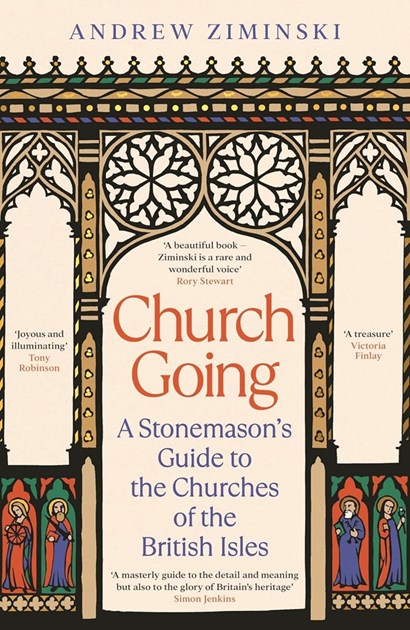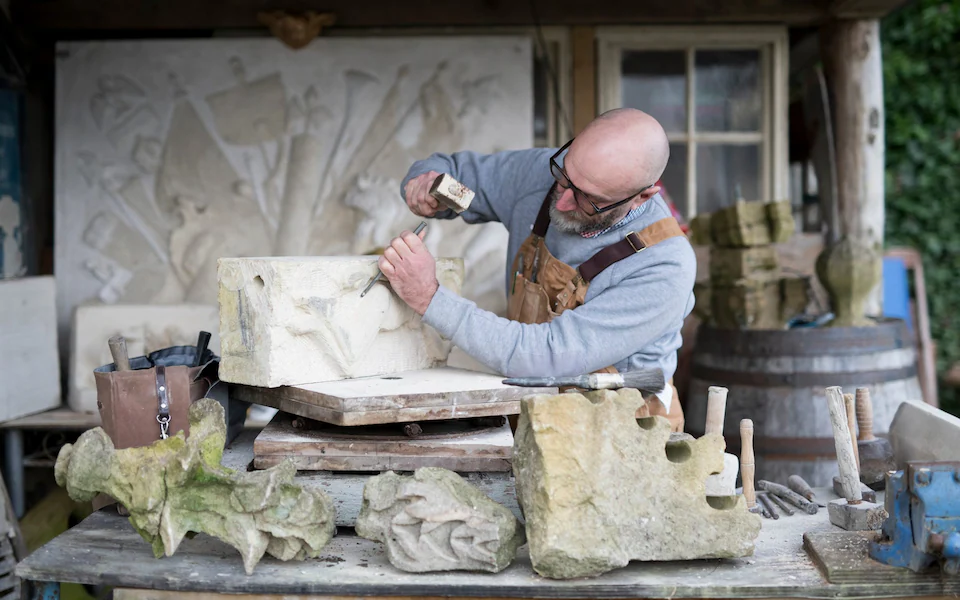I am presently in Wales appreciating some rest and space. There are two features of what makes for refreshment here. The first is reading given the gift of uninterrupted time. The second is exploring places and buildings near and far. These often include Churches if I am fortunate to discover an open gate or door.
Despite a life time of Churchgoing there is all too often something that I come across that is curious or perplexing. ‘I wonder what that is’; ‘why has the builder done this to the sanctuary’ or ‘what does this schema of decoration mean’. Reading buildings is a complex business!
Along with many others I had was in awe of The Stonemason (2020) by Andrew Ziminski and drank from its understanding with great delight. It was illuminating and informative. Ziminski proved himself a careful and accessible guide. His love for these buildings and understanding stones through the crafted text. This is an author who opens up the stones and people who left us the ever yielding gift of these spaces. Each of you will have, I suspect. a place or space that speaks to you – that draws you back again and again.
Here is the writer at work. Look at his concentration. Imagine taking a block of stone and creating an image for decoration or illumination. Watching the stonemason at work is a whole process of discovery in itself.
A teacher and mentor once told me that no one should write anything before they are 50 ! I took no notice. However there is a quality to this book that is nurtured in the soil of thirty five years of work as a stonemason.
He has travelled far repairing roofs or windows. He has restored medieval wall paintings. His careful eye is a key skill that bears wonderful fruit in this book. This conservator is also a skilled guide and interpreter. Ancient Wessex is his home turf, but his projects, these past 35 years, have taken him to all corners of Great Britain and Ireland. Ziminski shows his reader how to pause, stop, look, notice and wonder. He is a very accomplished master of prose. This book is a sheer delight to read.
As I write the Church of England, alongside many other denominations, face a crisis of confidence and trust. Religion has been steadily marginalised over many decades. Its future seems especially vulnerable and the reasons undergirding this complex. Churches serve many purposes in communities across our land.
They are places of worship. They act as hubs of community where the old and young connect. They are places of social action from which food banks operate. The young and old gather and learn the shape and practice of prayer and reflection. At best our Churches build community. In this book Ziminski argues that : ‘To know a church is to hold a key to the past that unlocks an understanding of our shared history.’ He celebrates architectural history. He also shows his reader how to read space.
This adventure of discovery is helped by the illustrations and skilful organisation.
History shifts and changes. We are people of habit but also fickle in our passions and obsessions. Religion will endure for it speaks into the truth of human condition. Theology is wise and liberating for it offers windows onto the mystery of God and the essential. deep rooted spiritual life of all human beings.
In this search the space that Churches offer us can help us to stop and listen to the heartbeat of our longings and vulnerabilities. Churches offer us space to enter into a laboratory of meaning, soul and the unlocking of the essence of our spiritual selves. Ziminski shows his reader how to navigate some of these longings. Read it and find out !


